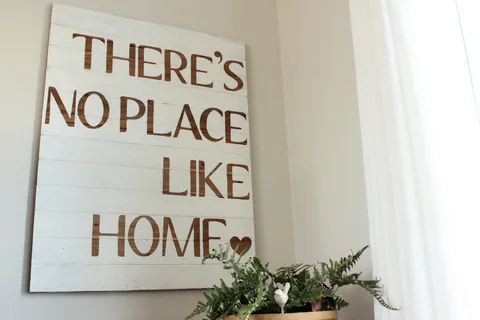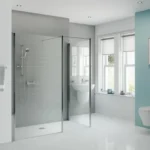How do you write a Caption for Interior Design-In the world of interior design, where aesthetics and functionality converge, the role of captions often goes unnoticed? However, these snippets of text hold the power to elevate the viewer’s experience, providing context, depth, and sometimes, a touch of humor.
In this article, let’s look into the intricacies of crafting compelling captions for interior design, exploring the nuances of language, SEO optimization, and the art of storytelling.
- Understanding the Purpose of Captions
- Crafting Captions that Tell a Story
- Incorporating Keywords for SEO
- Balancing Creativity and Clarity
- Using Descriptive Language
- Tailoring Captions to Different Platforms
- Showcasing Brand Personality
- Utilizing Hashtags Effectively
- Engaging the Audience with Questions
- Avoiding Common Caption Mistakes
- Monitoring Analytics and Iterating
- Collaboration between Designers and Copywriters
- Caption Length and Formatting Tips
- Final Thoughts
- FAQs About Writing Captions for Interior Design
Understanding the Purpose of Captions
Captions, when thoughtfully created, go beyond the obvious. They serve as the bridge between the designer’s vision and the observer’s perception. A well-crafted caption can elucidate the design philosophy, highlight unique features, and evoke emotions that a mere visual might not convey. In essence, captions are the storytellers of the design world, adding layers of meaning to the visual narrative.
To truly understand the significance of captions in interior design, one must recognize them as more than just labels or tags. They are snippets of communication that connect the dots between the designer’s intention and the observer’s interpretation. When viewers comprehend the purpose, inspiration, or thought process behind a design, a deeper connection is forged.
Crafting Captions that Tell a Story
Interior design is a form of visual storytelling, and captions are the words that complete the narrative. To write a captivating caption, one must embrace the role of a storyteller. It’s not merely about describing what is seen but about unraveling the tale woven within the design. Consider this: a caption that narrates the journey from concept to creation, capturing the essence of the design process, resonates far more than a mere label.
Crafting narrative captions involves providing a glimpse into the designer’s creative journey. Share the challenges overcome, the inspirations embraced, and the emotions embedded in the design. This narrative approach not only engages the audience but also transforms a static image into a dynamic story, fostering a connection that transcends the visual realm.
SEE ALSO: What is a walk in shower: Benefits and Styles?
Incorporating Keywords for SEO
In the digital age, visibility is paramount. Crafting captions with an understanding of search engine optimization (SEO) principles can significantly enhance the reach and impact of interior design content. Keywords, strategically placed within captions, act as signposts for search engines, directing the right audience to your visual creations.
Identifying relevant keywords requires a nuanced understanding of both the design industry and the language used by your target audience. Consider the terms they might use when searching for design inspiration. By seamlessly integrating these keywords into your captions, you not only improve your content’s discoverability but also position yourself as a voice within the design community.
Balancing Creativity and Clarity
While creativity adds flair to captions, clarity is the compass that ensures your message reaches its destination. Striking the right balance between creativity and clarity is essential in crafting effective interior design captions. An excessively creative caption may leave the audience bewildered, while an overly technical one might dampen the design’s emotive impact.
Consider a caption as a window into the designer’s mind. It should offer a clear view of the design’s essence without obscuring it with jargon or ambiguity. Think of your audience as companions on a visual journey – your words should guide them, enhancing their appreciation for the design without overwhelming them with complexity.
Using Descriptive Language
The power of a well-chosen adjective or a vivid metaphor in a caption is akin to adding the perfect spice to a dish – it elevates the experience. Descriptive language serves as the paintbrush that adds strokes of detail to your design canvas. Instead of merely stating facts, infuse your captions with words that evoke sensory experiences.
Imagine describing a cozy reading nook as a “sunlit sanctuary adorned with plush cushions and warm hues.” Such descriptions not only paint a vivid picture but also invite the audience to feel the comfort and ambiance of the space. By choosing descriptive language with intention, you transform captions into immersive experiences.
Tailoring Captions to Different Platforms
Captions are versatile, adapting to the unique nuances of various platforms. What works on Instagram may not resonate as effectively on a blog or website. Understanding the distinct characteristics of each platform is key to tailoring your captions for maximum impact.
Social media platforms thrive on brevity and visual appeal. Craft concise and compelling captions for platforms like Instagram and Twitter, where attention spans are shorter. In contrast, on a blog or website, you have the luxury of elaborating on the design story. Tailor your captions to suit the platform, ensuring they complement the user experience rather than competing with it.
Showcasing Brand Personality
In a world inundated with visual content, brand personality sets you apart. Captions provide a unique opportunity to infuse your brand’s identity into the narrative. Whether your brand exudes sophistication, playfulness, or minimalism, let these traits shine through in your captions.
Consider how Apple’s captions reflect simplicity and elegance, mirroring the ethos of their designs. Your captions should be an extension of your brand voice, creating a cohesive and recognizable identity across all your design communications. When done right, your captions become as distinctive as your visual style, fostering brand loyalty and recognition.
Utilizing Hashtags Effectively
Hashtags are the digital signposts that guide users to relevant content. Incorporating hashtags into your captions is a strategic way to increase the discoverability of your interior design projects. However, the key lies in using hashtags judiciously and thoughtfully.
Avoid the temptation to overload your captions with hashtags. Instead, choose a few relevant and popular ones that align with the theme or style of your design. This not only enhances your content’s visibility within specific communities but also establishes your presence within the broader design landscape.
Engaging the Audience with Questions
A well-crafted question has the power to transform a passive viewer into an active participant. Incorporating rhetorical questions in your captions not only engages the audience but also prompts them to reflect on the design in a more personal manner.
Consider a caption that asks, “Can you envision yourself unwinding in this serene corner?” This not only invites the audience to imagine themselves within the space but also encourages them to share their thoughts and experiences in the comments. Questions spark conversation, turning a one-way communication into a dialogue.
Avoiding Common Caption Mistakes
In the pursuit of creativity, it’s easy to fall into common captioning pitfalls. From excessive use of emoji’s to overly formal language, these mistakes can dilute the impact of your captions. Awareness is the first step toward avoiding these pitfalls.
Avoid using clichés or generic phrases that offer little insight into the uniqueness of your design. Similarly, be mindful of the tone – too casual or too formal may not align with your brand voice. Regularly review your captions, seeking feedback from peers or even your target audience, to refine your approach and steer clear of common mistakes.
Monitoring Analytics and Iterating
In the digital realm, data is your compass. Regularly monitoring analytics provides invaluable insights into the performance of your captions. Identify which captions resonate most with your audience, the keywords driving traffic, and the platforms where your content performs best.
Armed with this data, iterate and refine your captioning strategy. Experiment with different styles, tones, and approaches to discern what works best for your unique audience. The iterative process is a continual refinement, ensuring your captions evolve in tandem with changing trends and audience preferences.
Collaboration between Designers and Copywriters
In the dynamic world of design, collaboration is the catalyst for innovation. The synergy between designers and copywriters is no exception. Designers bring visual narratives to life, while copywriters articulate the unspoken stories within the designs.
Effective collaboration involves open communication, where designers share their insights, inspirations, and design philosophies with copywriters. This collaborative approach ensures that captions not only complement the visuals but also amplify the design’s intended message. When designers and copywriters work in harmony, the result is a seamless fusion of visual and verbal elements.
Caption Length and Formatting Tips
Captions, like well-designed spaces, benefit from thoughtful composition. While there is no one-size-fits-all approach, certain guidelines can enhance the effectiveness of your captions. Consider the following tips:
- Conciseness: Aim for clarity without unnecessary embellishment. Concise captions maintain the viewer’s interest without overwhelming them.
- Formatting: Break down longer captions into digestible chunks. Use line breaks or bullet points to enhance readability, especially on platforms that prioritize scannability.
- Consistency: Maintain a consistent tone and style across your captions. This builds a cohesive narrative and reinforces your brand identity.
Final Thoughts
How do you write a Caption for Interior Design-In the realm of interior design, where visuals dominate, captions emerge as the unsung heroes, enriching the viewer’s experience and conveying the untold stories within designs. Crafting compelling captions is an art that marries creativity with strategy, ensuring that your designs not only captivate the eyes but also resonate in the minds of your audience.
As you embark on the journey of caption creation, remember that each caption is an opportunity to forge a connection, to narrate a story, and to invite your audience into the world of your designs. With a thoughtful blend of creativity, SEO optimization, and a deep understanding of your brand, your captions can transcend mere labels, becoming the voice that echoes in the hearts of those who engage with your designs.
FAQs About Writing Captions for Interior Design
- How important are captions in interior design?
- Captions play a crucial role in conveying the narrative, inspiration, and emotions behind interior designs, enhancing the viewer’s understanding.
- Why should I incorporate keywords into interior design captions?
- Keywords optimize your captions for search engines, increasing the visibility of your content to a broader audience.
- What is the ideal length for interior design captions?
- Aim for a balance between conciseness and informativeness, ensuring that your captions are neither too brief nor overly verbose.
- How can I showcase brand personality through captions?
- Infuse your brand’s identity into captions by maintaining a consistent tone, incorporating brand-related keywords, and aligning with your overall brand voice.
- Should I use hashtags in interior design captions?
- Yes, but use them judiciously. Choose relevant and popular hashtags to enhance discoverability without overwhelming your captions.
- What are common mistakes to avoid in interior design captions?
- Avoid clichés, excessive use of emojis, and striking a tone that doesn’t align with your brand identity. Regularly review and refine your approach.
- How can I engage the audience through captions?
- Use rhetorical questions to prompt reflection and participation. Encourage viewers to share their thoughts and experiences in the comments.
- Why is collaboration between designers and copywriters important for captions?
- Collaboration ensures that captions complement the visual narrative, articulating the unspoken stories within designs and creating a harmonious fusion of visual and verbal elements.
- How can I monitor the performance of my captions?
- Regularly review analytics data to understand which captions resonate most with your audience, identify high-performing keywords, and optimize your strategy accordingly.
- What role does storytelling play in interior design captions?
- Storytelling adds depth and meaning to captions, transforming them from labels to narratives that connect with the audience on a personal level.



